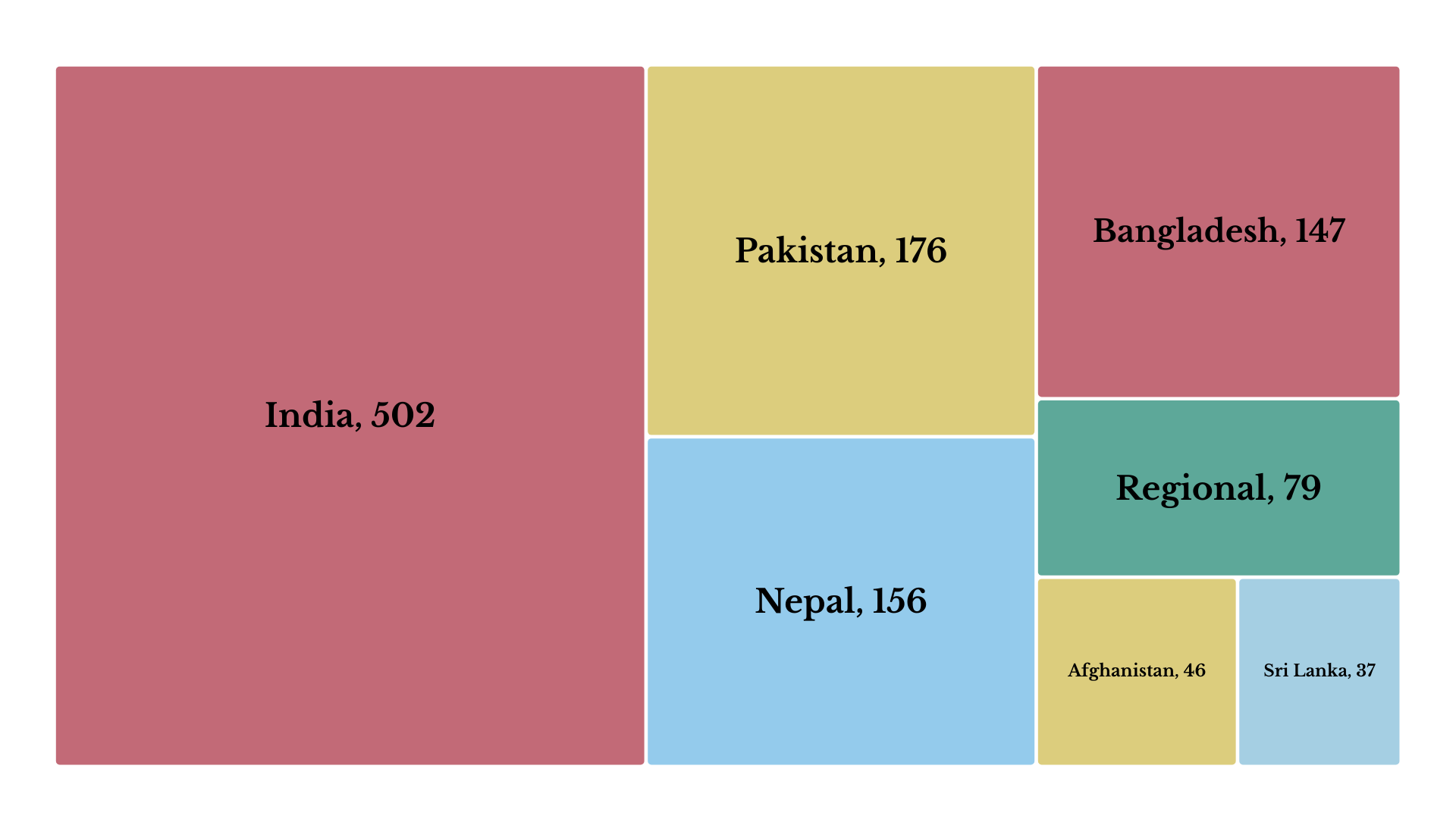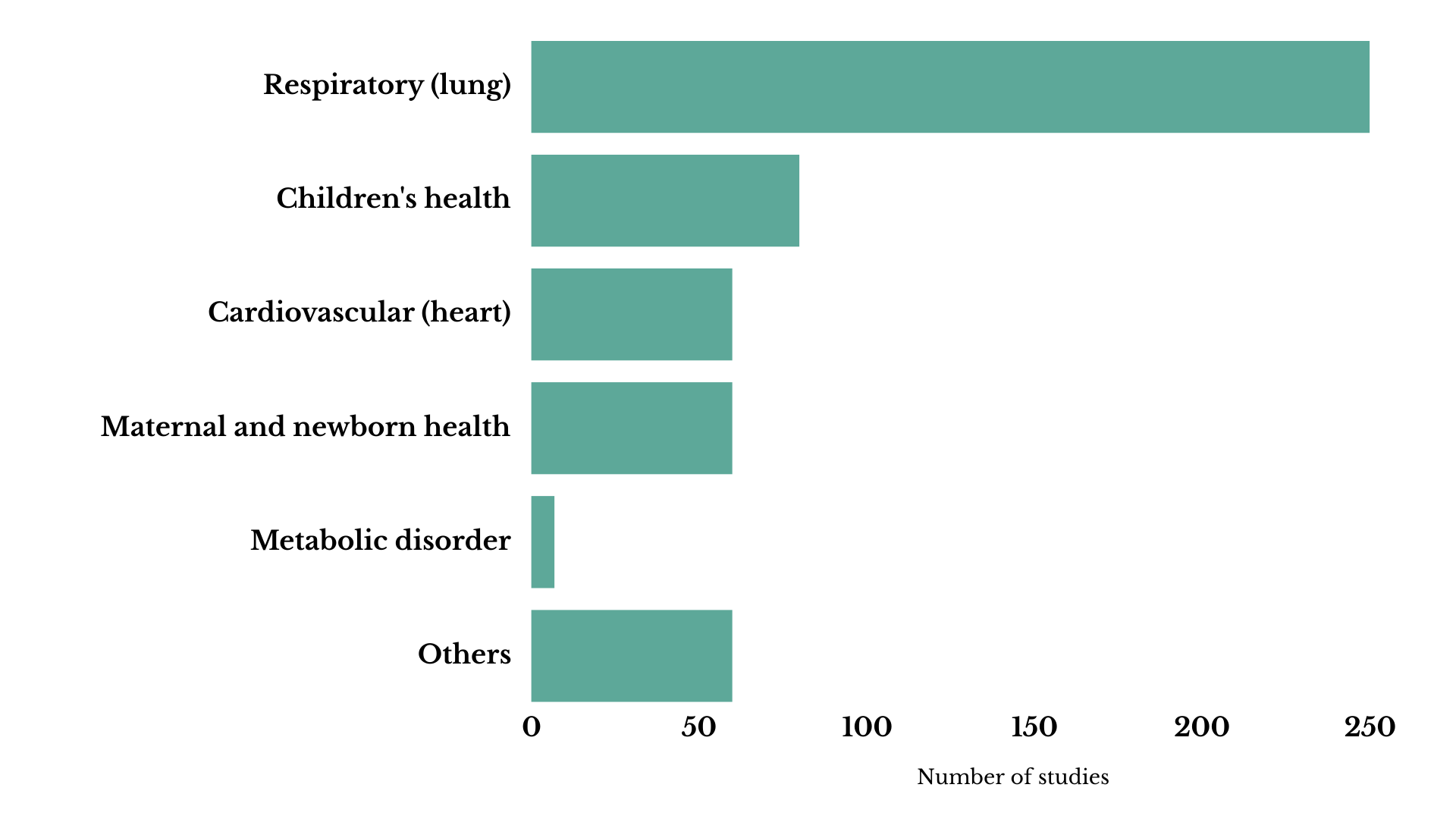
You are here
Database of South Asia – Air Pollution and Health (DoSAAH)
Air pollution ranks as the leading risk factor for poor health in South Asia. In 2021 alone, it is estimated to have resulted in 2.6 million deaths across the region. In this context, there is growing investment in monitoring air quality and developing air quality management plans. Targeted policies are being implemented across a variety of sectors, from expanding access to clean energy for cooking and heating, promotion of electric mobility, modernizing brick kilns, and developing solutions to reduce burning of agricultural waste. The progress thus far shows that with sustained, evidence-based implementation programs, clean air can be achieved, promoting better health for all. A key pillar for decision-making is the evidence of the health effects of air pollution. In the last decade, there has been a growing number of research publication exploring the association between exposure to air pollution and health.
Previous works have emphasized the need to establish national and regional databases for exposure and biological data as a priority in air pollution health research in India, and have recommended developing a comprehensive database to compile air pollution and health-related studies. Such a database can not only inform research but can also help inform policy decisions, for example, utilizing the health evidence while setting up or updating national air quality standards.
Recognizing the need for such a resource in South Asia, the Health Effects Institute has developed the Database of South Asia – Air Pollution and Health (DoSAAH) – Air Pollution and Its Health Effects (DoSAAH), an interactive, integrated, and downloadable bibliographic resource on air pollution and health in the region. It includes peer-reviewed research studies and select gray literature focused on the science of air pollution and its effects on human health across South Asian countries. The database leverages multiple sources of peer-reviewed research, combining searches from PubMed, Web of Science and Google Scholar, ensuring a comprehensive repository of information. Studies from Afghanistan, Bangladesh, India, Nepal, Pakistan and Sri Lanka are included in the database.
More than 1000 studies included in the database
As of July 20, 2024, the database includes nearly 1100 peer reviewed studies and 30 non-peer reviewed reports. The following tree map provides an overview of studies across the region. In addition, there are close to 80 regional studies, which are defined as studies covering at least two South Asian countries for the purposes of the database. Nearly half of the total inclusions in the database are from India. The database comprises of over 300 epidemiological studies, more than 200 air quality monitoring and modelling studies, 170 exposure assessment studies, 100 health impact assessments, 50 review articles, and nearly 20 editorials and commentaries.
Figure 1: Number of studies in the database grouped by country
Note that the database will be periodically updated and the numbers are subject to change over time.
Studies exploring the association between exposure to air pollution and respiratory health outcomes are the largest category followed by studies on children’s health. A majority of studies are cross-sectional (i.e., point in time estimates for the health effects of air pollution), with very limited number of studies assessing the effects of long-term exposure to air pollution. The studies in the database date back to 1959, including one of the earliest studies highlighting the risk of air pollution on heart disease, published in 1959 by the renowned Indian cardiologist Dr. Padmavati.
Figure 2: Number of studies in the database grouped by type of health outcome
There are several global examples of similar databases on studies on air pollution and health. In the United States, the US Environmental Protection Agency maintains the Health and Environmental Research Online database (HERO), originally created in 2004, which provides searchable scientific studies and references to develop environmental regulations and policies in the country. Similarly, in Switzerland, LUDOK—the Swiss Literature Database on Air Pollution and Health collects and catalogs literature on air pollution and health on behalf of the Federal Office for the Environment. Recently, the Climate Change and Human Health Literature Portal was launched by the National Institute of Environmental Health Sciences in the United States to covering relevant scientific literature on the health implications of climate change across the world. To the best of our knowledge, no such databases exist within the South Asian region. At the national level, the National Environmental Engineering Research Institute in India ran the Indair portal for a few years, but as of early 2024, the database is not active and is not regularly updated.
How to use the database
The database is free and available to the public. Users can filter and focus search results based on various criteria such as publication date, country, study type, and health outcome. The health outcomes covered in our database are extensive, including but not limited to cardiovascular and respiratory conditions, maternal and infant health, children’s health, metabolic disorders and others.
The database is designed to support researchers, practitioners, policymakers, and public health professionals in accessing targeted and high-quality evidence on air quality and its health effects. It includes a wealth of studies from across South Asia that can be utilized for research, decision-making, strategic planning and community engagement.
Help us grow the database!
For further inquiries or to submit additional articles for inclusion in the database, please contact Dr. Abinaya Sekar [asekar[at]healtheffects[dot]org]. We also welcome collaborative opportunities to disseminate and utilize this database for wider applications.


